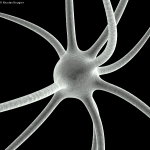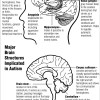A New Neurotransmitter (D-Aspartic Acid)
 In 2011, you would think that neuroscience is focused on discovering answers to high-level questions about the brain; how consciousness arises, how emotions work, what is autism, etc. Although progress is being made in all of those areas, it seems that we still have a great deal to learn about even the most basic components of the brain.
In 2011, you would think that neuroscience is focused on discovering answers to high-level questions about the brain; how consciousness arises, how emotions work, what is autism, etc. Although progress is being made in all of those areas, it seems that we still have a great deal to learn about even the most basic components of the brain.
Recently, a group from Naples reports that D-Aspartic acid functions as a neurotransmitter in both a mammal the rats (Rattus norvegicus), and a mollusk (Loligo vulgaris). D-Aspartic acid (D-Asp) has been known to scientists for well over a century. However, its role as a neurotransmitter was only now confirmed by the work presented by D’Aniello et.al.
The brain is usually thought of in its own category when considering our organs; deservedly so, since it seems to be the seat of our personal identity, our selves. Still, the molecules we think of as neurotransmitters (GABA, glutamate, serotonin, etc.) we most often isolated from other parts of the body, and have roles in biology unconnected with neurotransmission.
Presence in the brain is of course not the qualifying factor for describing any particular molecule as a neurotransmitter. The D’Abuello et.al demonstrate not only the presence of D-Asp acid in high concentrations in synaptic vesicles, but also show that there are specific post-synaptic receptors for D-Asp which trigger signal-transduction of cAMP upon binding of the D-Asp ligand.
| Print article | This entry was posted by Jason Williams on May 13, 2011 at 10:30 am, and is filed under G2C Online. Follow any responses to this post through RSS 2.0. You can skip to the end and leave a response. Pinging is currently not allowed. |








